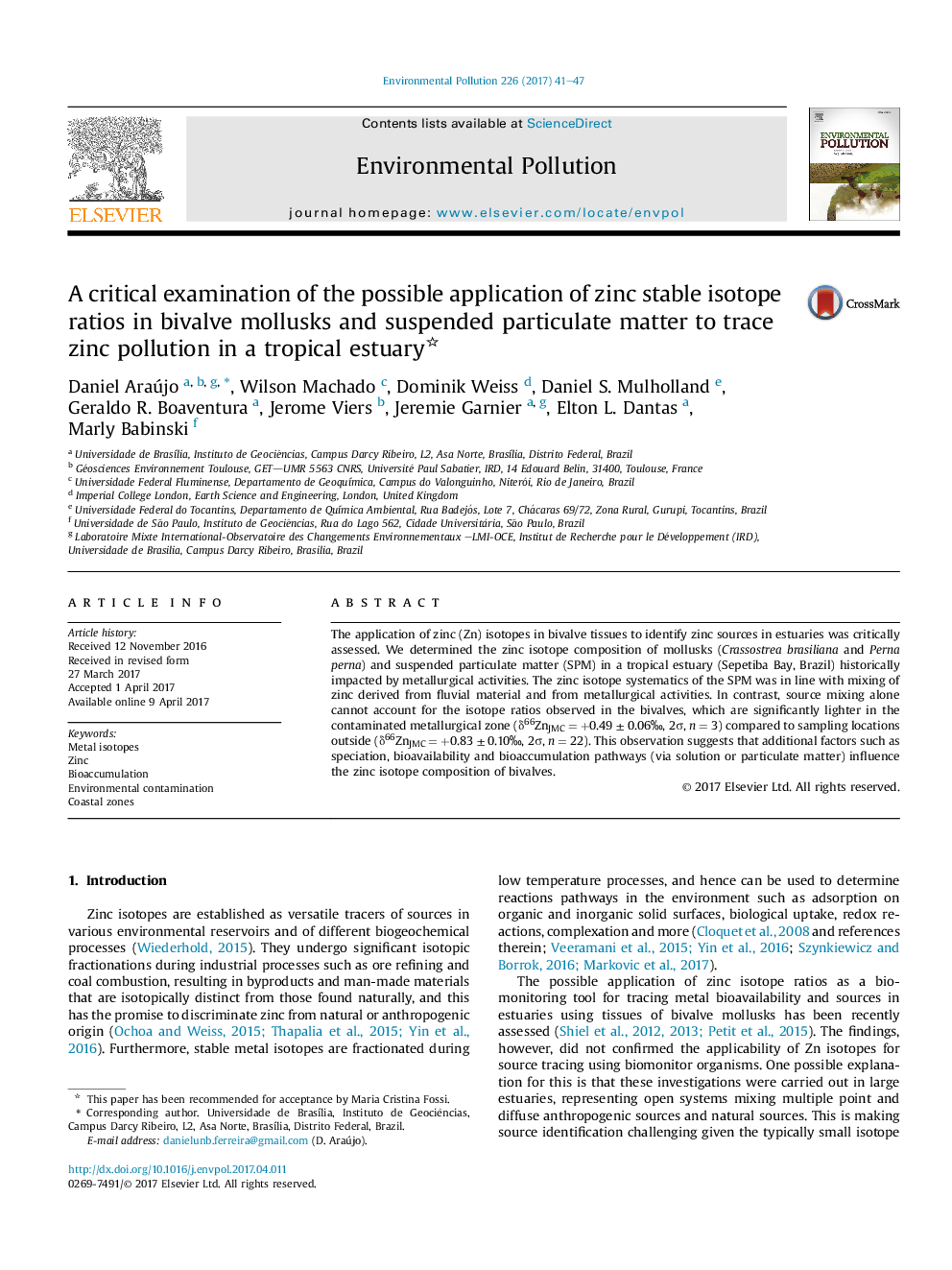| کد مقاله | کد نشریه | سال انتشار | مقاله انگلیسی | نسخه تمام متن |
|---|---|---|---|---|
| 5749064 | 1619147 | 2017 | 7 صفحه PDF | دانلود رایگان |
- Zinc isotope composition of bivalves (oysters and mussels) and suspended particulate matter (SPM) were assessed in a Brazilian tropic estuary.
- Zinc isotope systematics of SPM were in line with mixing of natural and anthropogenic sources.
- Mixing of different sources, in contrast, cannot account for observed isotope ratios of bivalves.
- Zinc speciation and bioavailability and bioaccumulation pathways may be controlling the isotope composition of bivalves.
The application of zinc (Zn) isotopes in bivalve tissues to identify zinc sources in estuaries was critically assessed. We determined the zinc isotope composition of mollusks (Crassostrea brasiliana and Perna perna) and suspended particulate matter (SPM) in a tropical estuary (Sepetiba Bay, Brazil) historically impacted by metallurgical activities. The zinc isotope systematics of the SPM was in line with mixing of zinc derived from fluvial material and from metallurgical activities. In contrast, source mixing alone cannot account for the isotope ratios observed in the bivalves, which are significantly lighter in the contaminated metallurgical zone (δ66ZnJMC = +0.49 ± 0.06â°, 2Ï, n = 3) compared to sampling locations outside (δ66ZnJMC = +0.83 ± 0.10â°, 2Ï, n = 22). This observation suggests that additional factors such as speciation, bioavailability and bioaccumulation pathways (via solution or particulate matter) influence the zinc isotope composition of bivalves.
205
Journal: Environmental Pollution - Volume 226, July 2017, Pages 41-47
